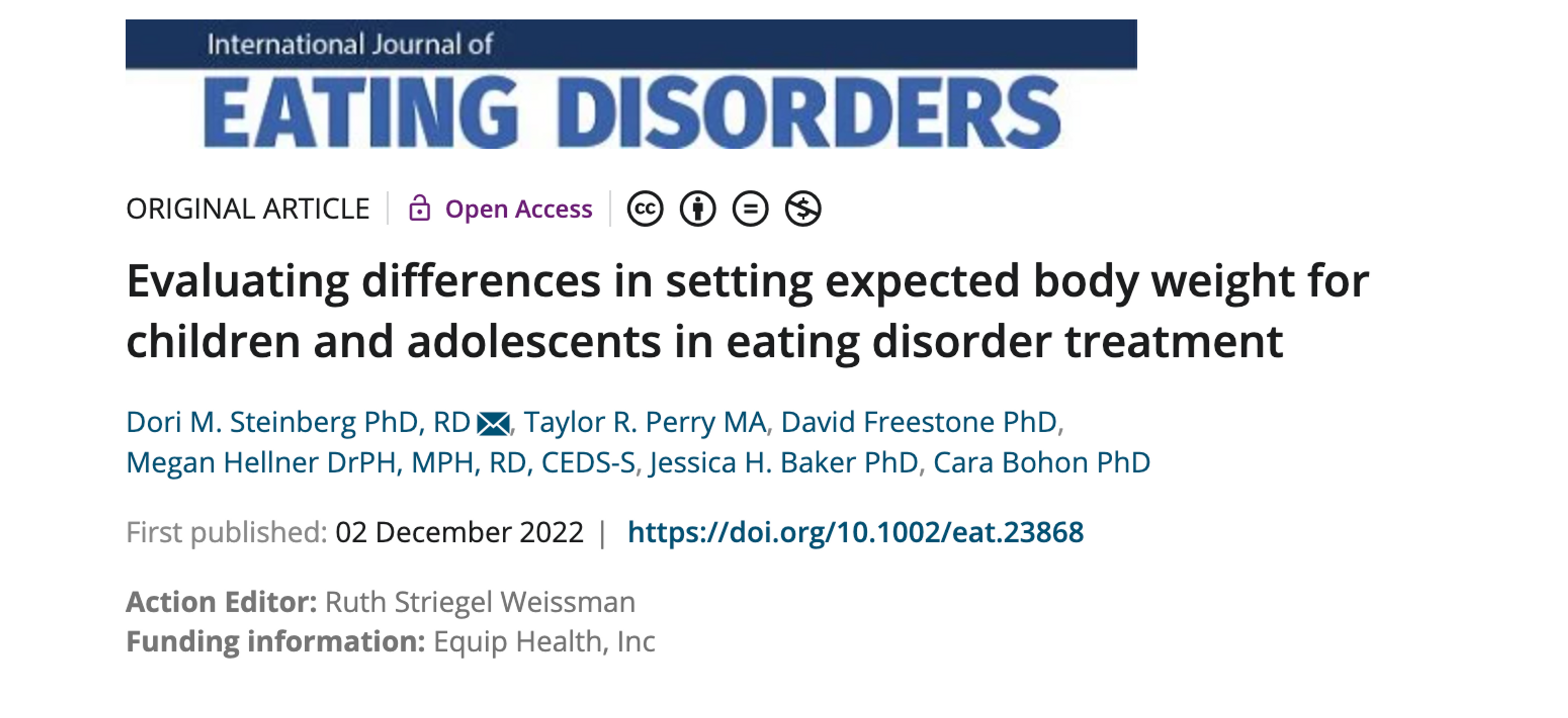
In eating disorder treatment, there’s one number that carries a lot of significance: the patient’s “target weight”. While not all patients in eating disorder recovery need to gain weight, many do, and in those cases, the care team establishes a target weight. This number matters, not only because it becomes a point of focus along the treatment journey towards renourishment, but also because it has implications for the patient’s prognosis and their chance of relapse.
So how does the care team arrive at the optimal target weight for renourishment? Well, there are a few different approaches — and, as a new research paper by Equip clinical researchers makes clear, using a one-size-fits-all BMI approach to calculate a target weight has significant drawbacks.
The paper, titled “Evaluating differences in setting expected body weight for children and adolescents in eating disorder treatment,” was published in the December 2022 issue of the International Journal of Eating Disorders, and was led by Dori Steinberg, PhD, RD, Equip’s VP of Research, alongside a team of other researchers that included Cara Bohon, PhD, Equip’s VP of Clinical Programs; David Freestone, PhD, Equip’s Lead Data Scientist; Megan Hellner, DrPH, MPH, RD, CED-S, Equip’s Head of Nutrition & Physical Activity Research; Jessica Baker, PhD, Equip’s Senior Research Manager; and Taylor Perry, Equip Research Intern and PhD candidate.
In the study, the researchers collected weight and other clinical data from over 600 patients ages six to 20 who were enrolled in Equip’s virtual eating disorder treatment, all of whom had a goal of weight restoration, and compared two different approaches to setting target weights using CDC growth charts. Target weight — referred to in the study as “expected body weight” — could be established by using median BMI, or it could be established through a more individualized approach. The individualized approach also used BMI to help determine target weight, but took into account the patients' growth chart trajectories to come up with a weight target that more accurately reflected their unique body needs.
They found that when providers used an individualized approach, the target weight they arrived at was significantly higher than it would have been if they’d relied on BMI. In fact, 70% of patients had a higher expected body weight when using the individualized approach vs. the BMI approach.
The reason this matters is simple: if a patient doesn’t become fully weight restored, their risk of relapse is higher. In other words, if a patient’s target weight is too low—which, the research suggests, might be the case when using BMI to calculate it—they will leave treatment without actually reaching the right weight for their body.
Steinberg sums it up like this: "Target weights are always a moving target. We know that an individualized approach — where dietitians set personalized target weight goals for all patients, monitoring and adjusting along the way — is the best approach. If the patient needs more nourishment, the dietitian should modify the target weight so that the patient can achieve their renourishment goals and head towards solid recovery. This helps patients stay in treatment longer, and it may set them up for long term success with recovery!"







